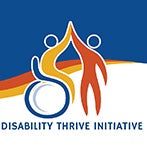
Verbal Behavior Lab

Joyce Tu, Ed.D., BCBA-D
Joyce.Tu@essc.org
Biography
Dr. Joyce C. Tu is a Board Certified Behavior Analyst with a doctorate in educational psychology from West Virginia University, specializing in applied behavior analysis (ABA). Dr. Tu has over 20 years’ experience as an organizational leader, behavior analysis professor and practitioner — teaching behavior analysis in universities and providing ABA services, training, workshops and supervision in the U.S. and abroad.
Dr. Tu’s specialization and research interests are chiefly in verbal behavior, specifically, joint control and its role in listeners’ behavior. Her research appears in peer-reviewed journals, such as The European Journal of Behavior Analysis and The Analysis of Verbal Behavior. In 2011, Dr. Tu co-authored a Chinese-language textbook published by Peking University Press, including chapters on topics such as shaping, prompting/fading, chaining and generalization.
Dr. Tu has held numerous workshops and speaking engagements for professional organizations in the U.S. and abroad, such as the Ai You Foundation, ABA International (ABAI) and the California Association for Behavior Analysis (CalABA). She has served on the board of advisors for Best Buddies International; as Editor-in-Chief of Operants magazine; and on CalABA’s Board of Directors, including as its President. Dr. Tu currently serves as President of the B.F. Skinner Foundation.
Additionally, Dr. Tu is founder and director of ABA Unlimited (ABAU), a behavior analysis consulting and continuing education provider. In 2021, ABAU developed a new verified ABA course sequence for Peking University School of Medical Education in Beijing, where Dr. Tu serves as an ABA professor.
Prior to her work for Easterseals, Dr. Tu was founder and director of Center for Behavioral Sciences (CBS) for 16 years, an ABA provider with over 100 employees throughout California. CBS was acquired by Easterseals Southern California (ESSC) in 2019 and Dr. Tu became ESSC’s Vice President of Clinical Transformations, Autism Services.
Education
Ed.D., Educational Psychology Specializing in Behavior Analysis
West Virginia University, 2004
Board Certified Behavior Analyst — Doctoral (BCBA-D)
Behavior Analyst Certification Board (BACB), 2004
M.S., Psychology — Applied Behavior Analysis
California State University Los Angeles, 2000
B.A., Psychology
California State University Sacramento, 1996
Academic Appointments
Curriculum Design Consultant and Professor of Applied Behavior Analysis
Peking University School of Continuing Medical Education, 2021 - Present
Associate Professor of Applied Behavior Analysis
Florida Institute of Technology, 2018 - 2020
Assistant Professor of Applied Behavior Analysis
Ball State University, 2011 - 2015
Adjunct professor of Applied Behavior Analysis
California State University, Los Angeles, 2000 – 2007
ABA Practice
Vice President of Clinical Transformations, Autism Services
Easterseals Southern California, 2019 - Present
Owner and Director
ABA Unlimited, Inc., 2017 - Present
Owner and Director
Center for Behavioral Sciences, Inc., 2004 - 2020
Co-Founder
Applied Behavior Consultants-China, 2003 - 2005
Volunteer Activities
President
B.F. Skinner Foundation, 2011 - Present
Secretary, Conference Chair, President-Elect, President and Past President
California Association of Behavior Analysis (CalABA), 2009 - 2018
Editor-in-Chief
Operants Magazine, 2010 - 2013
Member of the Board of Advisors
Best Buddies, 2010 - 2013
Research Interests
Dr. Tu’s research focuses on verbal behavior — primarily the origin of listener’s behavior, as well as sources of control of verbal behavior which can be identified and verified through basic and applied human studies. Currently, Dr. Tu is working on four research projects:
Using BST and Fluency Training to Teach Fire Safety Skills to Adults with Developmental Disabilities
Many individuals with developmental and/or physical disabilities do not acquire essential safety skills without explicit instruction, which can pose significant concerns for caregivers. For some populations, basic safety skills are unlikely to be acquired by traditional teaching methods relying on spoken instruction. Current research literature provides little guidance on how to teach safety skills to these individuals. Dixon, Bergstrom, Smith, and Tarbox (2010) conducted a review of safety literature involving persons with developmental disabilities over a 39-year span. Skills like fire safety were sparsely represented. Since 1970, only 10 such studies examined methods for teaching fire safety skills.
Our current research will evaluate teaching methods used in previous studies such as behavioral skills training (BST) and its effectiveness when teaching fire safety skills to adults with developmental and physical disabilities. In addition, our study will evaluate teaching methods such as fluency training for generalization of these skills across time.
The Role of Joint Control in Listener Responses and Generative Responding
In manded selection responses, a speaker mands, e.g., “Give me a cup,” while the listener scans an array of items, picks up the cup and gives it to the speaker. In this scenario, the listener’s behavior is under the multiple control of the instruction and the cup. Joint control provides a behavioral explanation: the listener first engages in the self-echoic “cup” while scanning items. When she sees the cup and vocally emits the word “cup,” two verbal operants are merged, i.e. self-echoic and tact. In this example, the self-echoic, “cup” and the tact, “cup” jointly control the selection response.
Many prior studies have shown that two or more verbal operants are necessary for selection responses to occur. The goal of our current research is to evaluate whether joint control as a teaching method generates novel, untrained, unreinforced responses.
Back to basics: using “Go and no-go” to teach simple discrimination to learners with autism
This study investigated the conditions necessary for stimuli to acquire control of skill acquisition. Subjects included two learners diagnosed with autism, ages seven and nine, both with long histories of little-to-zero skill acquisition in their ABA programs. Skinner’s (1938) successive method, “Go and no-go” stimulus control training was used in pre-mand training with the Picture Exchange Communication System (PECS). The successive method was then followed by the “Go-right/go-left” successive procedure developed by Harrison (1984), and then “Go-right/go-left” with simultaneous stimulus presentation (Harlow, 1950).
In our study, participants acquired initial discrimination of PECS icons in approximately 88 sessions and maintained the skills three months after the introduction of first discrimination method.
Our next focus in this line of research will include the successive method and “go left/go right” method to teach other skills involved in simple and conditional discrimination.
Teaching Identification of Complex Emotions to Individuals with Autism
In this study, we used video modeling to teach complex emotions across seven children diagnosed with autism. Each participant was shown five short video clips. The participants would identify characteristics of body language, facial expression, voice, and volume of verbal behavior. Our initial results suggest the use of video modeling while teaching participants to identify multiple characteristics can quickly and predictably promote skill acquisition in identifying complex emotions.
The next phase of our study will introduce multiple exemplars (of complex emotions) using the same teaching methods. We anticipate participants will learn to identify complex emotions exhibited by others and by themselves, and learn how to respond to these emotions.
Notable Publications
Haq. S.S., Alresheed, F. & Tu, J.C. (2020). Behavioral Treatment of Problem Behavior for an Adult with Autism Spectrum Disorder and Misophonia. The Journal of Developmental and Physical Disabilities.
Tu, J.C. (2016). The Role of Joint Control in Selection Responses. The European Journal of Behavior Analysis, 1, 41-48.
Tu, J.C. et al. (2011). Applied Behavior Analysis for Children with Special Needs — a Chinese Language Textbook. Peking University Press.
Tu, J.C. (2006). The Role of Joint Control in the Manded Selection Responses of Both Vocal and Non-Vocal Children with Autism. The Analysis of Verbal Behavior, 22, 191-207.
Background • Human Subjects Institutional Review Board • Recent Publications • Team Members • Hans the Robot • Laboratories • Research Studies • Continuing Education Units • Contact Us


